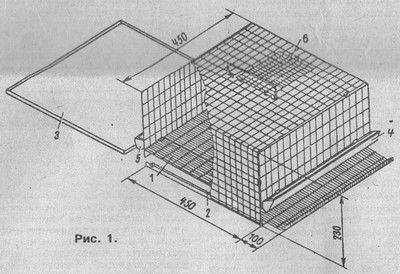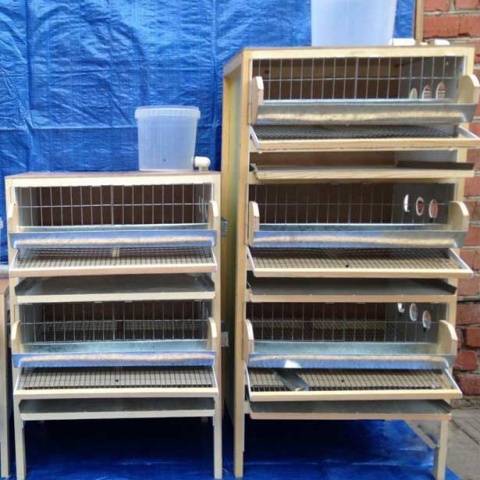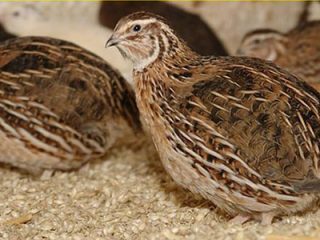Content
When you want to raise quails at home, you will have to build housing for them. Aviaries are not suitable for these birds. Cages, of course, are easier to buy, but not every poultry farmer can afford the extra costs. If you approach this issue creatively, then your home quail farm can be equipped with homemade houses. Now we will look at how to make quail cages with your own hands from different materials.
Requirements for cells
First of all, a homemade quail cage must be strong. If metal mesh is used, the mesh size should be just large enough for the bird's head to fit through to the feeder. Through the large holes present in the structure, nimble quails instantly jump out.
When making your own cages for quails, you need to take into account the number of livestock. There should be about 200 cm per bird2 free space. Houses often made by poultry farmers provide 150 cm for one individual2 free space, which is also good for quail.
Quails in the wild live in densely grassy areas. Birds love twilight and occasionally go out into the sun. They will need to provide a similar environment at home.
Quail cage drawing
Since the decision has been made to build cages at home for free, then drawings will be needed for the work. In principle, the diagram of any design represents an ordinary box. The distinctive feature is the bottom. For adult quails it is done at a slope of 12O towards the egg collector. When the females begin to lay eggs, the eggs will roll down the inclined floor into a tray fixed outside the cage.
Based on the fact that an adult bird needs about 200 cm2 free space, we calculate the size of the quail cage, taking into account the fact that the family consists of one male and four females. Usually the width of the house is made small, about 30 to 50 cm. Quails grow small, and a ceiling height of 25 cm will be enough for them. The length of the cage is calculated based on the number of living quails.
The presented drawing of a quail cage shows a three-tier structure. Such models are best suited for home use, due to their space saving. If desired, the tiers can be made more or less.
Cage sizes for quails of different ages
Now is the time to look at the cells for keeping quails of different ages.If you decide to seriously start breeding this bird, you will have to make houses of different ages, differing in their design:
- Newborn chicks up to ten days of age will need brooders. This house has three side walls made of chipboard, fiberboard or plywood. The front fourth wall, floor and ceiling are covered with a 10x10 mm fine mesh. Instead of a mesh, the ceiling can be covered with fiberboard or simple cardboard. A feeder with a drinker is placed inside the cage, and the chicks are provided with lighting and heating.
- The next model is intended for young quails up to 45 days old. First of all, the design provides a floor made of mesh with larger cells, but not more than 16x24 mm. All side walls may not be solid. Here, a mesh for quail cages with a cell size of 24x24 mm is preferred.
- Houses for adult quails can be completely mesh or with three plywood side walls. To reduce the cost of consumables, metal side meshes are replaced with plastic counterparts. The size of the mesh cells of the side walls should be within 32x48 mm, and for the bottom a mesh with cells of 16x24 mm will be used. In the houses where laying hens will live, the bottom is made with a slope towards the tray for collecting eggs. The tray itself can be simply a continuation of the bottom, but always with a limiter on the edge. Otherwise, the eggs will roll out and fall to the ground.
- Particular attention should be paid to the cages in which the quail will be kept for meat. The houses are made only from mesh with cells 32x48 mm. Moreover, it is important to limit the birds’ space to smaller cage sizes and ceiling heights. The less the quail moves, the faster it will gain weight.
Having dealt with the basic requirements, we proceed to making a quail cage with our own hands from different materials according to step-by-step instructions.
Mesh house with wooden frame
The quail cage shown in the photo has a wooden frame. All sides, ceiling and floor are covered with metal mesh. The phased assembly of the structure consists of the following steps:
- Using self-tapping screws, the wooden elements are connected at right angles to form the outline of the box. At the corner joints, you can screw overhead metal corners with self-tapping screws. They will prevent the frame from loosening.
- When the frame is completely ready, it is advisable to treat the wood with an antiseptic, then open it with varnish. This procedure is aimed at extending the life of the wooden frame.
- Fragments are cut out of the metal mesh according to the size of the sides of the frame. The mesh is nailed to the wooden frame with small nails, bending them. Using the last row of nails, they try to tighten the mesh so that it does not sag.
When the frame is completely covered, trays for collecting eggs are attached underneath and a sheet steel tray is installed under the floor mesh. Finally, you need to inspect the entire structure so that there are no sharp ends of the mesh or protruding nails on it, which could injure the quail.
The video shows cages for quails:
Frameless metal mesh cage
The easiest and fastest option to assemble a quail house is to bend it out of a metal mesh. The design does not provide any frame. You need to do the following:
- A rectangular box is bent from a metal mesh. In this design there are no two side walls. They are cut out separately and attached to the resulting box using wire.Moreover, one fragment is fixed tightly, and a door is made in the second. This will be the front side of the cage.
- For the bottom, cut out a fragment of fine mesh and attach it at an angle of 12O towards the cage where the door is located. There will also be an egg collector here. It is a continuation of the bottom, only a limiter made of any wooden plank is attached to the edge. You can simply bend the edges of the mesh.
The quail house is ready. All that remains is to install a tray under the floor mesh and you can move in the birds.
plywood house
The production of a plywood house is justified by the cleanliness of the room where it will be located. Feathers and dust flying from quails will settle on the tray and not fall to the ground, as is the case with mesh cages.
The procedure for making a plywood house consists of the following steps:
- The frame is made from a wooden beam with a cross-section of 50x50 mm. It is advisable to make a multi-tiered structure on legs. The frame is made using the frame cage method from mesh.
- The resulting skeleton of the structure must be sheathed. Thin plywood or fiberboard is suitable here. The fragments are cut to the size of the three sides and the ceiling. Several rows of ventilation holes with a diameter of 30 mm are drilled into the sheets. Each fragment is nailed to the frame.
- The finished structure is treated with an antiseptic and then opened with varnish. Door frames for each section of the cage are made from similar bars. Fragments are cut out of the metal mesh to fit the frames and secured with nails. The finished doors are secured to the frame on the front of the house using canopies.
The floor, the continuation of which is the egg collector, is cut out of fine mesh and nailed to the frame. A pallet is installed under the floor of each section.
House made of plastic boxes
It cannot be said that a quail cage made from plastic boxes is an ideal option, but it is acceptable as a way out of the situation for the first time. To assemble the structure you will need three plastic boxes of the same size, but different heights. Place the containers on top of each other so that the tall box is between the two low ones. The bottom container will be the cage tray. An opening for the door is cut out in the top drawer with a knife. In the side shelf of the middle box, the holes are enlarged so that the quail can stick its head to the feeder.
In the video, do-it-yourself quail cages made from boxes:
What are cell batteries
At home and in production, cage batteries for quails have proven themselves well, allowing them to save usable space. What is it? The answer is simple. A battery is a collection of cells stacked on top of each other. That is, a multi-tiered structure is made. Each section is equipped with its own floor, tray and egg collector. The materials and method of manufacturing cell batteries are no different from the designs discussed above.
So, we looked at how to make a quail cage with your own hands from different materials. The matter is not complicated, but it requires certain skills. In any case, homemade houses will cost the poultry farmer less than store-bought ones.
















